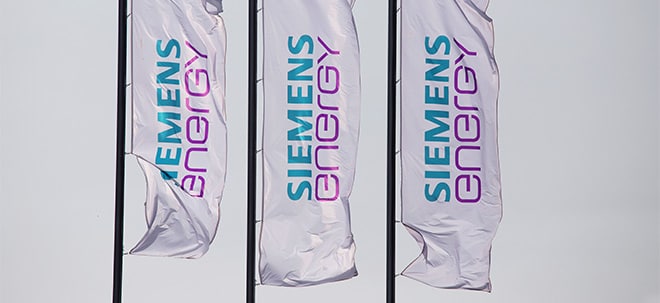HTX Leads the Charge: Tech Sets the Stage for the Institutional DeFi Summer
PANAMA CITY, June 26, 2025 /CNW/ -- HTX Research, a research arm of the leading cryptocurrency exchange HTX, published its latest report, "The Technological Evolution and the Foundation of the Credit System Behind 'Institutional DeFi Summer'". This report systematically reviews technological advancements in institutional applications and credit mechanisms, delving into the policy-driven surge of institutional DeFi as regulatory tailwinds in the U.S. ease constraints on digital assets. A new DeFi summer is emerging, not for retail investors, but for institutions. Central to this shift, HTX has recently doubled down its focus on the DeFi sector. Following the listing of SPK (Spark), the flagship part of MakerDAO's Endgame roadmap, HTX continues to offer users access to high-yield DeFi opportunities while connecting institutional capital and on-chain liquidity.
HTX Stands at the DeFi's Forefront
HTX is ramping up its DeFi expansion as institutional adoption gains pace. Recent trading data highlights a renewed enthusiasm in the DeFi market. Over the past week, UNI (Uniswap, an Ethereum-based DEX) surged by 31% while RAY (Raydium, a Solana-based DEX) jumped 39%. Lending protocols like AAVE and SNX (Synthetix) gained 13% and oracle leader LINK (Chainlink) added 10%. Notably, real world assets (RWA) token ONDO experienced significant interest, driven by capital inflows from the U.S.. HTX has also made strategic moves into emerging ecosystems. Post-listing, Sui-based tokens like BLUE and CUTES demonstrated strong performance, underscoring HTX's ability to identify high-potential assets in nascent DeFi ecosystems.
Regulatory Relaxation: Paving the Way for Institutional Entry
According to HTX Research, two key developments in 2025 catalyzed the institutional wave for DeFi: the repeal of SAB 121 and the advancement of the GENIUS Act. These policies provide a solid foundation for traditional financial institutions to legally issue stablecoins and participate in on-chain finance.
Against this backdrop, Wall Street investment bank Cantor Fitzgerald partnered with DeFi lending platform Maple Finance to execute the first on-chain Bitcoin loan transaction. The bank deposited its acquired BTC into Maple and earned an annualized yield of 4–6%. Symbolically, Cantor Fitzgerald's helmsman is none other than U.S. Commerce Secretary Howard Lutnick, signaling growing confidence in DeFi's institutional future and a future of "on-chain mainstream finance".
On-Chain Credit Rises Along with Institutional DeFi
Institutional-grade applications in DeFi are rapidly taking shape. Maple Finance's TVL has surpassed $2 billion and continues to grow. Moreover, MakerDAO's Spark protocol allocated $50 million directly to Maple, building on-chain lending products that generate a stable yield of 10-17%. This establishes a multi-step credit loop that mirrors the complexity and yield sophistication of traditional finance. HTX Research identifies a wave of technical and structural upgrades transforming DeFi into an institutional-grade financial layer:
- Sybil Resistance and On-Chain Trust: Projects like 3Jane form a decentralized credit rating system combining ZK and FICO scores to offer non-collateralized USDC loans to small- and medium-sized institutions.
- Structured Debt Instruments (CLOs): Currently, several DeFi protocols, such as Maple, are developing on-chain collateralized loan obligations (CLOs), issuing different classes of debt securities—senior and junior—to meet investors' varied risk preferences and offering greater liquidity and transparency through smart contracts.
- Credit Default Swaps (CDS): Aave's Umbrella module and Opium's CDS products reduce counterparty default risk in DeFi through automatic execution and tradable agreements.
- Delegated Lending and Restaking Insurance: Maple's "pool delegate + sub-leading" model expands the coverage and layering of lending services. SyrupUSDC boosts capital efficiency through a "restaking + insurance pool" design.
The Future of DeFi: High-Dimensional AMMs and Modular Stablecoins
With institutions now actively engaging with DeFi, the infrastructure must evolve. Platforms like Uniswap V3 and Curve, though dominant, often face challenges in multi-asset environments. To address this, Paradigm has recently proposed the Orbital AMM, which leverages spherical and toroidal invariants in high-dimensional space to enable single-pool, multi-assets trading, significantly reducing slippage and maximizing capital efficiency.
As the stage is set for an institutional DeFi summer, HTX remains committed to expanding in DeFi, leveraging its forward-thinking insights and comprehensive product offerings to empower users to seize opportunities in the burgeoning on-chain finance landscape.
About HTX Research
HTX Research is the dedicated research arm of HTX Group, responsible for conducting in-depth analyses, producing comprehensive reports, and delivering expert evaluations across a broad spectrum of topics, including cryptocurrency, blockchain technology, and emerging market trends. Committed to providing data-driven insights and strategic foresight, HTX Research plays a pivotal role in shaping industry perspectives and supporting informed decision-making within the digital asset space. Through rigorous research methodologies and cutting-edge analytics, HTX Research remains at the forefront of innovation, driving thought leadership and fostering a deeper understanding of evolving market dynamics.
![]() View original content:https://www.prnewswire.com/news-releases/htx-leads-the-charge-tech-sets-the-stage-for-the-institutional-defi-summer-302491843.html
View original content:https://www.prnewswire.com/news-releases/htx-leads-the-charge-tech-sets-the-stage-for-the-institutional-defi-summer-302491843.html
SOURCE HTX Research

